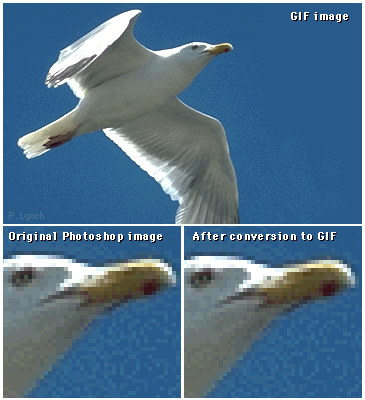Contents
Web Graphics
GIF files
The Graphic Interchange Format (GIF) was popularized by the Compuserve Information Service in the 1980s as an efficient means to transmit images across data networks. In the early 1990s the original designers of the World Wide Web adopted the GIF format for its efficiency and widespread familiarity. Today the overwhelming majority of images on the Web are in GIF format. Virtually all Web browsers that support graphics support the GIF file format for inlined images. The GIF format incorporates a compression scheme to keep files sizes at a minimum, and GIF files are limited to 8-bit (256 or fewer colors) color palettes. There are now several slight variants of the basic GIF file format that add support for transparent color, and support for the interlaced GIF graphics popularized by the Netscape Navigator Web browser.
GIF File Compression
The GIF file format uses a relatively basic form of file compression (Lempel Zev Welch, or LZW) that squeezes out inefficiencies in the data storage without causing a loss of any data ("lossless compression") or distortion of the image. The LZW compression scheme is most efficient at compressing images with large fields of homogeneous color. It is not very good at squeezing complex pictures with lots of grainy texture. All variations of the GIF graphics file format incorporate LZW file compression. See Siegel (1996) for an excellent discussion on optimizing graphics for GIF compression.

|
Siegel, D. 1996. Creating killer web sites. Indianapolis: Hayden Books. www.killersites.com Weinman, L. 1996. Designing Web graphics. Indianapolis: New Riders. www.lynda.com |